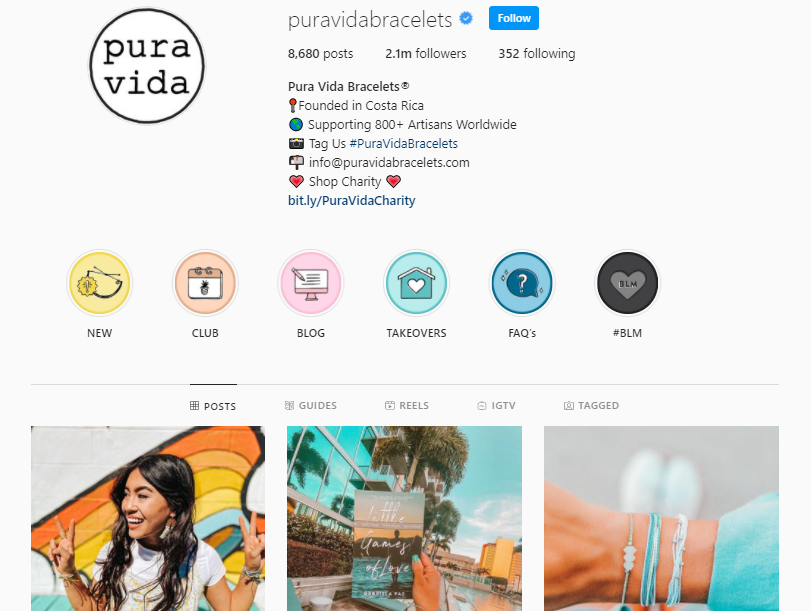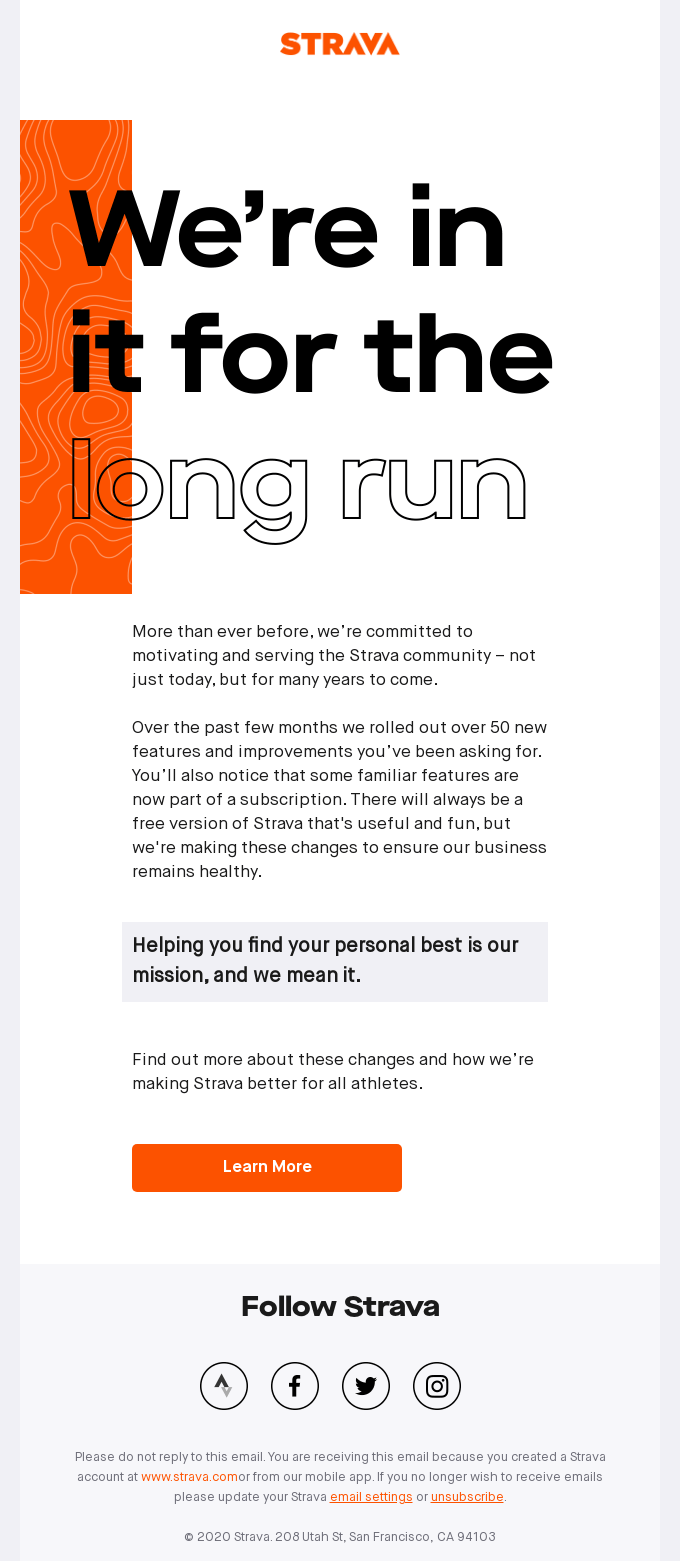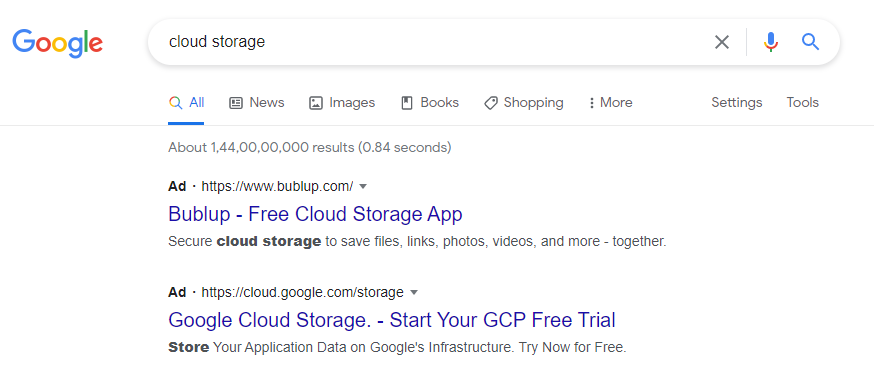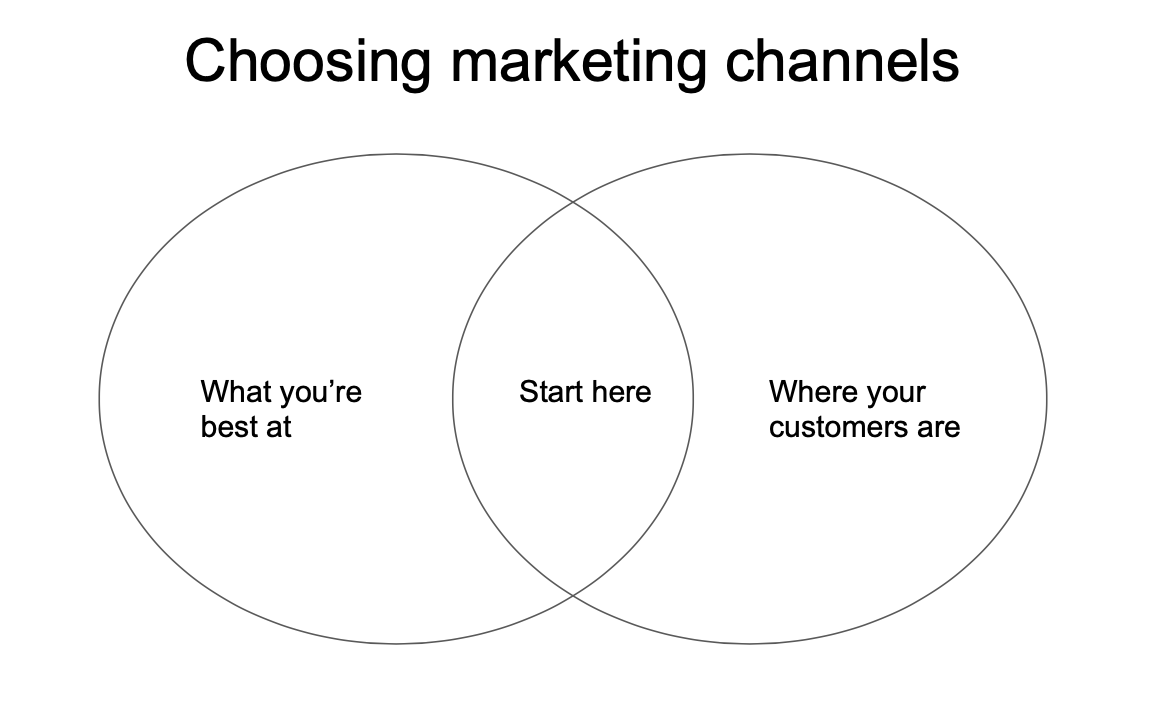Marketing
Digital marketing 101: How to build your digital marketing strategy from scratch

Marketing

Digital marketing is such a broad subject that university students spend up to five years studying it. The internet can seem overwhelming for a small business when you consider the scope of possibility for your marketing strategy.
But that’s no cue to pull back. If the last decade has proven anything, it’s that digital marketing is the best (and most cost-effective) way to reach your audience. And over the next five years, global digital marketing spending is set to double.
Don’t worry – we’ve condensed everything we know into this handy 101 guide. Grab a coffee and pull out your notebook as we dive into the evolving space of digital marketing.
Digital marketing refers to any form of marketing that appears on the internet or electronic devices such as mobile phones, computers, or tablets. This includes social media promotions, search-engine-optimized (SEO) content, email newsletters, and any other form of marketing that happens online.
Since digital marketing only includes new and evolving methods of marketing, television ads are not considered a form of digital marketing.
Consumers and businesses are both spending more time and money on digital channels, respectively.
The average person now spends 4.2 hours a day in apps on their phone. Consequently, businesses are spending more and more each year to find customers on digital channels: Global spend is projected to reach $645 billion by 2024, nearly double that of 2019 ($335 billion).
Digital marketing is an essential way to reach the 21st-century customer. It’s more affordable than mass forms of advertising, such as billboard and television ads, and taps into high-traffic online channels to help businesses grab user attention and acquire customers.
Some advantages digital marketing offers over traditional marketing include:
The cost of running digital ads ranges from $5–$10 on Instagram and Facebook (for reaching 1K users), and the cost per click on an ad is as low as $2 for Google Ads. You can also sign up for a free account on any social media platform or launch an email newsletter at a negligible cost and engage with your target audience.
On the other hand, the cost of broadcasting TV ads is $150K–$350K for a 30-sec spot on national TV, while radio ads can cost $200–$6K per week. The cost of producing TV ads can also run from $20K to $1M, depending on the length of the ad.
The cost of producing digital ads and digital marketing content is also much lower, especially if you use free tools like Canva (image editing software) and YouTube.
Digital marketing allows you to target marketing to the exact audience who may likely purchase your product. Digital platforms like Facebook, Instagram, and Google collect data such as age, occupation, hobbies, location, and interests, from users’ browsing habits and online profiles. You can use this data to make your marketing efforts more precise and targeted. For example, if your womenswear brand is geared toward tech-savvy 25- to 30-year-old professionals, you can choose to show your digital content to those women only.
The ways to target traditional marketing are limited. At best, you can match ads to specific types of media. For example, you might place ads for a womenswear brand in a women’s magazine, but you cannot target traditional marketing by age group, hobbies, or profession.
It helps you quickly test and compare marketing strategies
Digital marketing is cheaper to produce and distribute, and it allows you to test various content ideas, channels, timings of posting, and creative design. It’s common for digital marketers to A/B test Facebook campaigns, Google ads, and Twitter strategies. They release two versions of the same marketing campaign on the same channel, changing a few elements like copy, button colors, or call to action to see which version performs better.
Testing helps digital marketers identify and double down on marketing messages and channels that work best for their business.
On the other hand, traditional media is costly to produce and broadcast to viewers, and so it’s unviable to test multiple approaches or ideas. You have only one shot at getting it right, and a lackluster TV or print ad usually means a lot of wasted resources.
Digital marketing allows you to track each click, view, or share you receive on digital content. This helps you identify the number of new users a digital campaign helped you reach. Further, you can also track how many users purchase a product after clicking on an ad or the number of email subscribers you receive after publishing a new blog post.
Better results tracking helps you spend your digital marketing budget more efficiently.
Mass media like TV or radio may give you ballpark figures of the number of viewers or listeners at a given time, but you can’t track the number of people who actually watched a TV ad or the number of passersby that glanced at a billboard. Since you can’t track the number of views or engagement with traditional marketing, it’s difficult to gauge brand awareness and the number of sales a piece of marketing leads to.
SEO, content marketing, and social media marketing might be the first to come to mind when you hear the term digital marketing, but the field includes many more diverse channels.
Below, we’ll describe six of the most popular forms of digital marketing.
SEO means search engine optimization. An SEO-focused website or blog optimizes content using the right keywords, so search engines such as Google or Bing show the website or blog as a top result when users search for a specific keyword.
To optimize websites for SEO, marketers first identify keywords their target audience actively searches for using keyword tools like Ahrefs or Moz. Then, marketers create content around those keywords to help answer possible questions related to that keyword. For example, a running gear retailer might conduct research and find that many people search for “How to choose a running shoe,” and create a comprehensive, search-optimized guide. If the post is effective, it will bring runners to the retailer’s site, provide them value, and hopefully lead to an Instagram follow, email-list signup, or even a sale.
SEO-focused content could include blog posts, sales pages, landing pages, or product pages. Keywords are added to a web page’s URL, headers, and subheaders to optimize the page for search engines, or they tell search engines that the page is a relevant search result for a given keyword.
Apart from researching and using specific keywords in content, a great SEO strategy also includes improving site speed, getting other websites to link to your content, and ensuring your content looks good on mobile devices. Each of these factors helps your website rank better in search results, too.
Optimizing web pages for SEO as described above is also known as organic or unpaid SEO. You could also use paid SEO to show your page as a top result for specific keywords on search engines. You select keywords your business wants to rank for and pay search engines to show your web page or blog post as a top result for that keyword. Paid SEO is also known as pay-per-click (PPC) advertising. Here’s a good resource that explains the difference between SEO and PPC in more detail.

SEO contributes to a major share of paid and organic website traffic, making it a great way for new businesses to attract potential customers to their website or product.
But SEO is not for businesses that expect immediate results. It takes around 4–12 months to drive results from SEO, that is, to start ranking in search results and drive traffic to a website or blog.
Social media marketing (SMM) refers to any form of marketing that appears on a social media platform such as Facebook, Instagram, Twitter, Pinterest, Quora, and niche social networks such as Goodreads. Like SEO, SMM can be organic or paid, too.
Social media marketers use social media posts and other forms of social media content like stories, hashtags, videos, and images to engage their existing audience, grow brand awareness, and promote products and services.
An Instagram page for a business, such as this one by Pura Vida Bracelets, counts as social media marketing. Its Instagram page helps Pura Vida relay its contact information to customers, share support for causes that matter to it, and showcase new products to its customers.

(Source)
One of the biggest perks of social media marketing is it gives you access to engaged audiences of all ages. A majority of Facebook, Snapchat, and Instagram users say they visit the platforms daily, with many users checking these platforms several times a day. While social media usage is highest among 18- and 19-year-olds, it’s also significant among those aged 30–65+.
On the flip side, it’s difficult to rise above the noise on social media since many businesses already have a social presence. A 2016 blog post stated that more than 3 million businesses advertise on Facebook, while Instagram had 25 million business accounts per a 2017 report. These numbers have likely increased over the years.
Email marketing refers to the use of different types of emails such as newsletters, courses, and product offers to engage audiences and promote products. Email is a particularly valuable channel for digital marketing because most people check their email at least twice or multiple times a day.
Email marketing helps you engage potential customers through courses or weekly newsletters, onboard customers to a product or service with a series of emails, and share important announcements and product updates with customers.
Emails are often also used to nudge customers to use a product or service through promotional offers, discounts, and updates on features that customers requested. Email marketing also offers the best return on investment (ROI) according to this 2019 report by DMA: “The ROI of email marketing is £42.24 for every pound spent.”
Take a look at how Strava uses email marketing to intimate customers about new features and improvements it has worked on – users who don’t use the app on a regular basis may be interested in checking out new features, thanks to this email.

While email is a good way to connect with new and old customers on a regular basis, email deliverability can be a bottleneck when sending emails in bulk. Unless readers add your email to their list of contacts, your email might land in Spam never be opened by readers.
Content marketing is the process of creating and distributing content with the purpose of educating and informing business prospects about a product and eventually converting them to buyers.
Content marketing and SEO may look similar at first, but there’s a key difference: SEO is a technical process that focuses solely on optimizing online content for higher rankings on search engines, while content marketing is a broader concept that involves the use of any form of content on any digital channel, not just search engines, to drive traffic to a website, build a list of leads, drive sales for a product or service, and educate customers. SEO is one way to get content marketing materials in front of a target audience, but it’s not the only one.
Content marketing includes creating varied types of content like blog posts, videos, podcasts, courses, white papers, and e-books. This content is then distributed through different digital channels like SEO, email, and social media. While content marketing is most popular among B2B (business-to-business) companies, it’s equally effective for B2C (business-to-consumer) companies.
The most common example of content marketing is a company blog, but podcasts such as Mailgun’s “Email’s Not Dead” and video series such as 360Learning’s “Onboarding Joei” are also good examples of creative, engaging content marketing.

Content marketing helps you nurture prospective customers into buyers. In 2019, 96% of marketing decision-makers said content marketing proved effective for their brand. These respondents measured the effectiveness of content marketing as an increase in website visitors, subscriber growth, and increased sales.
Similar to SEO, content marketing also requires a time commitment and consistency to show results such as traffic and sales. As one study shows, blogs with more than 1 million views are at least a decade or more than nine years old and have been consistently publishing for a long time.
Affiliate marketing is the process of using third-party sellers (sellers who don’t work at your company) to drive traffic and sales for a website or product. Third-party sellers are also called affiliates in affiliate marketing.
Businesses set up affiliate marketing programs to increase sales of their services or products. Affiliates sign up for affiliate marketing programs and promote affiliate products or services by using a unique affiliate link. When customers view or buy a product by clicking on an affiliate’s link, the affiliate earns a commission.
Amazon Associates, Amazon’s affiliate program, is a popular example of affiliate marketing, where affiliates earn money for selling any of Amazon’s exhaustive list of products.
Affiliate marketing is a popular way of setting up a small sales army for your brand. 81% of US consumers report purchasing through links and images shared by influencers, which makes affiliate marketing a lucrative option for both brands and affiliates.
However, affiliate programs are also prone to fraud, with affiliates using spamming, illegal transactions, and fake clicks to drive up purchases and earn higher commissions.
Paid advertising generally refers to PPC advertising on Google, Facebook, and other social media platforms. Additionally, paid advertising includes online partnerships where companies pay publishers to promote or review their product or service in a blog post or video.
Here’s a PPC ad on Google for the term “cloud storage”:

Paid advertising also includes native ads, which are paid content that blends with the publication it appears in by using the publication’s editorial style, design, and tone.
Here’s an example of a native ad by publishing giant HarperCollins in BuzzFeed. It doesn’t directly promote HarperCollins or look like an ad at all, but it casually mentions the brand at the end of the piece. On the other hand, the blue box on the right side is clearly an ad for Coordinate software.

Paid advertising allows you to reach target audiences faster than organic marketing. A paid ad on Google only takes 24 hours to display to audiences when they search for your chosen terms, while you might spend months trying to rank for a similar keyword through SEO.
However, the downside of advertising is that people tend to tune out ads, so consumers will likely skim over your paid ad when browsing the web.
A digital marketing strategy is an action plan that outlines your buyer’s needs, your digital marketing goals, and the channels and tactics that help you meet your goals. The strategy also details who will be responsible for managing digital marketing for your business, how you’ll create engaging digital content, and how you’ll track results from digital marketing.
Here are six steps to creating an effective digital marketing strategy – one that makes the best use of digital marketing channels and meets your business goals.
You might have a basic idea about who your customers are, but you’ll need a deeper understanding of your customers’ preferences, habits, and challenges to choose the right digital channels and create relevant digital content.
The goal of customer research is to find out:
If you’re marketing to businesses (also called B2B marketing), you’ll want to focus on not just the business you’re selling to, but also the specific employee within the business you’re selling to. The experience level of your product’s users, their day-to-day job, pain points, work tools, and online hangouts are all important for B2B marketing. For instance, if you’re selling to marketers, you want to know what kind of marketers (content marketers, social media marketers, SEO specialists), their experience level, challenges, and where they spend most of their online hours.
Online surveys are a good way to collect information about your target audience. Create an online survey using a tool such as SurveyMonkey and share it with existing customers through email or social media to get an understanding of who they are. Offer an incentive such as a gift card or free products to get customers to complete your survey. If possible, get on a call with a few customers to get a closer look into what their day-to-day looks like, what their challenges are, and the digital channels they frequent. Here’s a detailed guide on conducting customer research the right way.
Your website is also a goldmine of information about your audience’s age, interests, location, and behavior (how they found your website, which pages they frequent most, and which pages they leave from). The widely used Google Analytics platform lets you track existing website visitor data for free, which can inform how you proceed.
In theory, investing in a wide variety of digital channels could net at least some positive effects for your business – traffic, sales, subscribers. In practice, you could burn through your entire marketing budget trying to master several digital channels without getting substantial returns on investment.
Len Markidan, CMO at Podia, recommends choosing digital marketing channels that lie at the intersection of where your customers hang out in the digital world and the digital channels you’re most familiar with. According to Markidan, this is a low-risk way to kickstart your digital marketing efforts.

source
The customer research you conduct early on should give you a list of digital marketing channels to pursue: social media websites, blogs, video platforms, digital publications, podcasts, and more.
Instead of going after each digital customer hotspot at the same time, play to your strengths. Choose one or two digital marketing channels you have at least some experience with or are familiar with. For instance:
Once you’re successful with one or two digital marketing channels, you’ll find it easier to build momentum on other channels as some of your target audience will already be familiar with your brand. For instance, if you run a popular newsletter, you’ll find it easier to build a following on social media as your newsletter subscribers will be one of your first few social media cheerleaders.
A digital marketing goal is an objective you wish to achieve from your digital marketing efforts. Digital marketing goals provide clarity and direction to you and your team, if you have one. Unsurprisingly, marketers that set digital marketing goals are 376% more likely to report success with digital marketing than those who don’t.
Common digital marketing goals include raising brand awareness, generating leads, converting prospects into customers, and educating customers about how your product works.
Your larger business goals are a great starting point for your digital marketing goals. For instance, let’s say you’re a startup, and one of your biggest business priorities is to generate awareness about your brand. Marketing goals that could help you achieve this objective include growing your social media following, getting more blog visitors, or getting more shares for your digital content.
Now that you have a list of potential marketing goals, use the SMART framework to make marketing goals more actionable for your team. Here’s what it stands for:

For your marketing goals to be SMART, your goals should list specific timelines and results to be measurable, be comparable to common benchmarks in your industry so they’re both realistic and aspirational, and make sense for your business at a given point in time.
Here’s a template from CoSchedule for setting SMART goals: By {insert day, month, year}, the {insert your organization’s name} marketing team will reach {insert number} {insert metric} every {insert time frame}.
Following the template above, here’s what a SMART marketing goal for a company in an industry that averages 15K blog views per month might look like:
“By July 2020, the ABC marketing blog will reach 10K blog views per month.”
The goal above provides a specific timeline for the marketing team while also listing an achievable result for them to work towards.
If you have the time and budget, set up a dedicated digital marketing team for your business. Most digital channels take at least a few months of consistent effort to show positive results and a team helps you achieve consistency.
A survey of over 1.5K marketers across different countries found most content marketing teams consist of three people or fewer. You don’t need a large digital marketing team to get results, but you do need people with the right set of skills.
Another survey found three most important skills for content marketers (or digital marketers) are social media, SEO, and building a content strategy. Social media skills mean familiarity with different social media channels and an understanding of audiences across different social media platforms, while SEO skills refer to technical abilities to optimize pages for search engines and experience with writing SEO-focused content. Digital marketers should also be good at writing, research, storytelling, analyzing data, communication, and empathizing with customers.
If you’re building a digital marketing team from the ground up, Toggl Hire, an employment screening tool, lists some basic steps to follow:
Kevan Lee, VP of Marketing at Polly, also has a handy set of interview questions to ask marketers and other professionals when growing your team.
Nobel Laureate Herbert A. Simon rightly said, “A wealth of information creates a poverty of attention.” With an overwhelming amount of content published each day – over 3.5M blog posts on WordPress and 300M photos uploaded to Facebook each day, for example – your content needs to be engaging if you want your target audience to pay attention.
Engaging content means different things for different digital platforms. On social media, high engagement refers to more likes, shares, and clicks on links, while for emails, engagement means high open rates and click-throughs on links. For blogs, high engagement refers to a high reading time for each post and more time spent on a website. Photos and videos drive the most engagement on social media, while tutorials or content that teaches audiences something specific drives most engagement for blogs.
In general, to boost engagement for content of all types:
Most of all, keep a handle on audience feedback for every digital post you produce. Digital content you’ve labored on for weeks may receive a lukewarm response from your audience, while a random tweet in the middle of the day may suddenly blow up on social media. Watch out for trends and outlier content, and mold your digital content accordingly.
Be sure to track data such as views, likes, clicks, and shares for each blog post, social media post, and email. This way, you’ll be able to see what’s working and what’s not and tweak your strategy accordingly.
Most digital marketing channels provide you with some form of analytics data that indicates whether audiences find your digital content engaging and if it leads to actions such as clicks to your website, purchases, subscriptions to your blog, and downloads of your digital content.
The type of data you can track for different digital channels include:
You can also use advanced analytics tools such as MixPanel, Heap Analytics, and Hotjar to collect more data on the actions users take on your website. User actions like clicks and scrolling tell you if your website content offers users what they need and if you need to tweak your website content to improve conversions.
Some digital marketing channels are more effective for small businesses than others, either because they’re more popular with customers, or they offer a greater return on investment than others.
Here are the three best digital marketing channels for small businesses:
Content marketing is effective because it provides evergreen value. Last year’s blog post, for example, can continue generating leads so long as new audiences are able to find it.
Three out of four B2C marketers characterize their organization as extremely, very, or moderately successful with content marketing. In another report, 60% of marketers said content marketing is very important to their marketing efforts, specifically because it helps them generate sales.
Content marketing is the best way to grow website traffic and email subscribers from scratch, even if you don’t have an established brand or deep pockets. GrooveHQ is a good example of a brand that grew on the back of content marketing. The blog started with few readers, but today it has more than 250K subscribers. The GrooveHQ blog also leads to trial sign-ups, new customers, and product mentions on social media.
Here’s a sampling of the content GrooveHQ publishes on its blog:

To get started with content marketing, you’ll need to publish helpful, interesting content for your target audience, choose how you’ll get the content in front of your target audience, and track how well your content performs over time. SEO and email marketing are the two best ways to distribute content because traffic from SEO increases over time, while your email list is the only digital channel that you have complete control over – that is, it’s not prone to algorithm changes.
Here are three helpful resources to learn more about content marketing:
Email is the most reliable way to keep in touch with customers, both old and new.
Marketers in one survey rated email newsletters as their highest performing content type for securing and nurturing leads and a close second for converting leads. According to one 2017 report, 50.7% of millennials said that promotional emails impacted their purchase decisions at least on a few occasions. Millennials form a large part of the digital audience you’ll be marketing to, and so it’s worth paying attention to their views on digital marketing.
Email marketing helps you communicate with current and prospective customers on a regular basis and keep them informed about product developments, updates, and offers. For instance, Dribble, a hiring platform for designers, sends newsletters to its designer community informing them about new projects available, as well as uses transactional emails to help companies and potential hires communicate. Their emails are opened by 1.2M designers each week and help keep their community engaged.

To begin email marketing, you’ll first need to choose an email provider that lets you send emails at scale, without your emails getting caught up in the spam folder, and also has a responsive customer service team. Mailjet by Pathwire lets you easily send emails in bulk to your current and prospective customers.
To rack up new email subscribers for your website and blog, you’ll also need to set up email subscription forms on your website and social media pages.
Here are three resources on email marketing to get you up and running:
Your brand needs to be on social media because that’s likely where your audience is too.
According to the GlobalWebIndex 2018 report, 54% of social browsers use social media to research products. Social browsers are internet users aged 16-64 who say they use social media to fill up spare time. Another report by Adobe shows social media is a great place to obtain new customers, as non-customers are three times more likely to visit retailers from social media than customers.
Social media is the best way to introduce your brand to potential customers, learn more about their likes and dislikes, and sometimes, even get them to purchase your product. Car sharing platform Car Next Door uses social media to “stay top of mind” with their target audience and build social proof for their product. The Car Next Door Facebook page has over 19K followers and enjoys a high level of engagement.

Creating a social media page for a business is not much different than setting up a personal social media profile. Sign up for a business account (usually free on most social media platforms), fill in your business details, and start posting content. Don’t forget to regularly interact with customers and chime in on relevant social media conversations to boost engagement with your own content.
To learn more about social media marketing, check out these resources:
Success in digital marketing comes down to the content you produce: Does it strike a chord with your audience? Do they find it compelling enough to take action? Can you keep content frequency and quality consistent?
Here’s a quick cheat sheet for creating digital marketing content that appeals to your audience:
There’s so much you can do for each piece of digital content in terms of copy, calls-to-action, and design, but there’s only so much your limited budget and time constraints will allow you to do. To find the most effective version for digital marketing content, test major elements like design, copy, and images before you launch it on a large scale.
In the digital world, testing refers to releasing two different versions of a digital campaign such as a web page, email, or ad, and comparing which version drives more engagement and preferred actions from your audience.
There are two types of digital testing methods available. A/B testing is a process where you change a single element such as copy, images, or CTA for a campaign, while split testing is a process where you change multiple elements of a piece of content and compare how the two versions perform.
For instance, in an A/B test, you might release two versions of a sales page with different headlines and show the different versions to two random samples of audiences. You could do the same with different visuals, different lengths of copy, and so on. After the testing period, you can see which version of your sales page drove more clicks or purchases.
Publish good content on a regular basis is key to staying top of mind for your customers. Consistency beats one-hit wonders, which are quickly replaced by the next Twitter, Instagram, or Facebook sensations.
Develop a regular publishing cadence for each digital channel and stick to it.
To maintain publishing frequency, use project management tools such as Asana, Trello, and monday.com to assign, track, and review content. Use batch production to produce digital content faster. Batch production is a technique where you group and complete similar tasks together, such as writing, editing, or image production.
To keep content quality consistent, set editorial guidelines for different types of content such as blog posts, social media posts, and emails. Editorial guidelines highlight the tone, grammatical requirements, content depth, and other specifications for your content, so the quality remains consistent across all pieces of content. Here’s an in-depth guide on setting editorial guidelines to uphold content quality.
Creativity makes your audience sit up and take note of your digital content, even as they’re bombarded by digital noise from all sides. Think of the last piece of digital content you saw – a quirky Instagram reel, a blog post with a different opinion, or an email with a sensational headline – it’s likely you remember it because it was creative enough to jolt you out of mindless scrolling and pay attention.
Creativity in digital marketing can mean many things – it can be a new way to use a digital channel (posting micro-stories on Twitter), a never-seen-before digital take (posting fresh opinions on old topics), or creating new content formats (sending complete blog posts in an email or doing live interviews with experts).
Creativity isn’t a bulb you can switch on or off at a whim, but there are ways to consistently be creative when producing digital content:
Email is one of the best ways to consistently communicate with your current and future customers.
On digital marketing channels like social media, users are often looking for distractions from boredom, and you’re competing with flashy content from their family and friends. In the case of email, though, people are there to open and read messages, making your marketing message more likely to stick with users.
Also, since email isn’t subject to algorithm changes, the only thing that affects your email open rates is the quality of your content. Even as your business evolves and changes, your email list remains a reliable way to communicate with your customers.
If you want to get started with email marketing, check out Mailjet by Pathwire, an easy and accessible way to send emails at scale.
Want to learn how to ace digital marketing for your business? Subscribe to the Mailjet blog for the latest insights and studies on email marketing and other digital channels.
Social media marketing